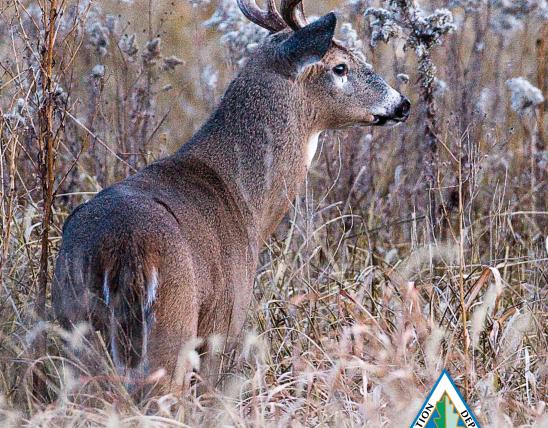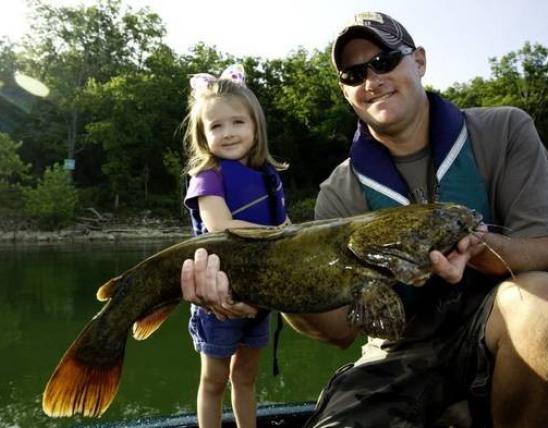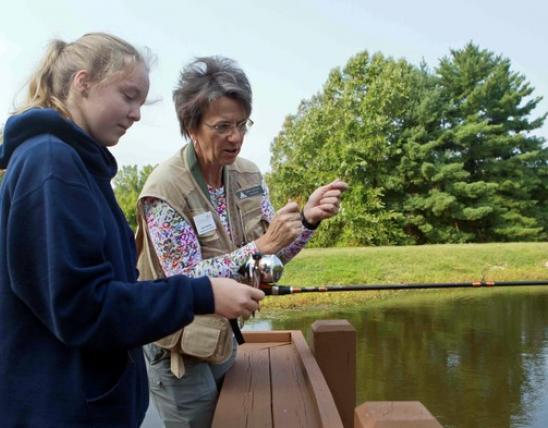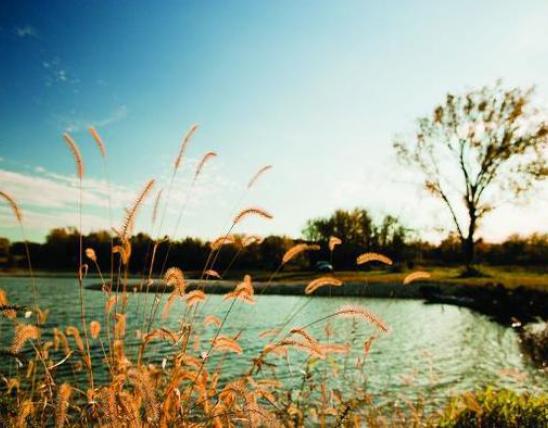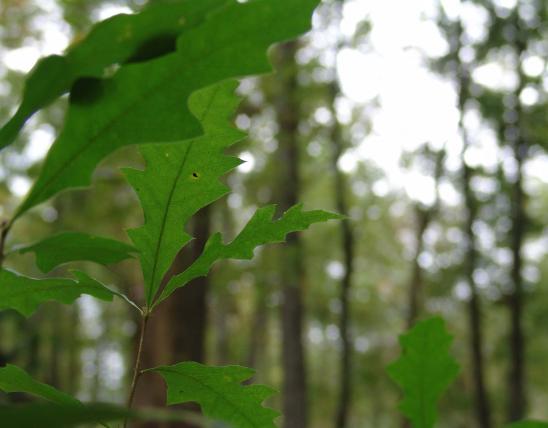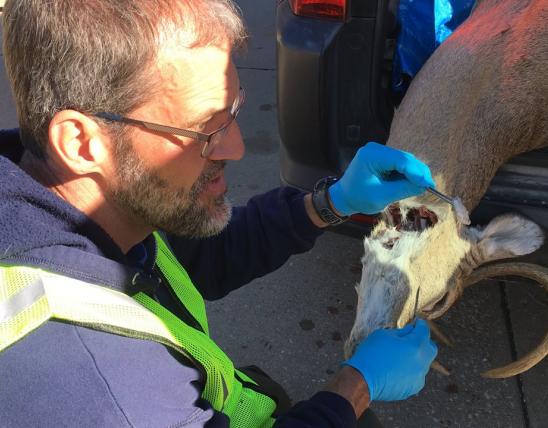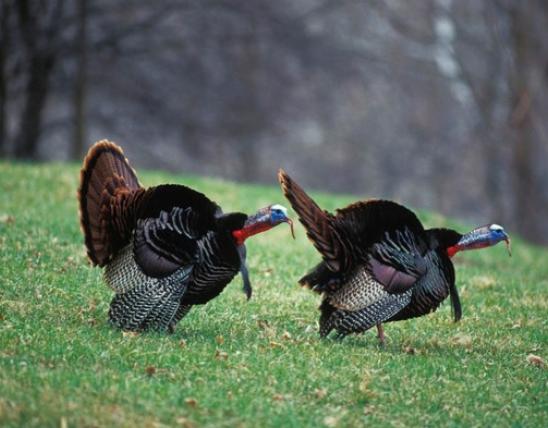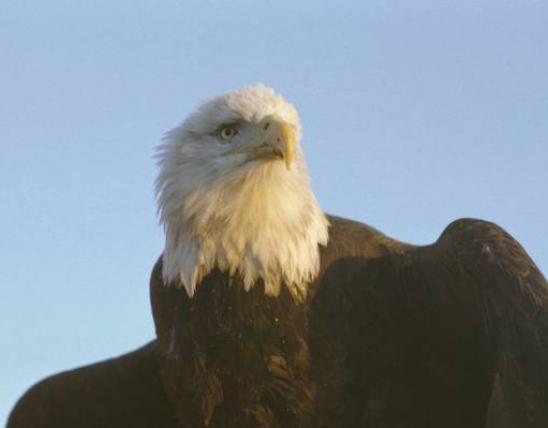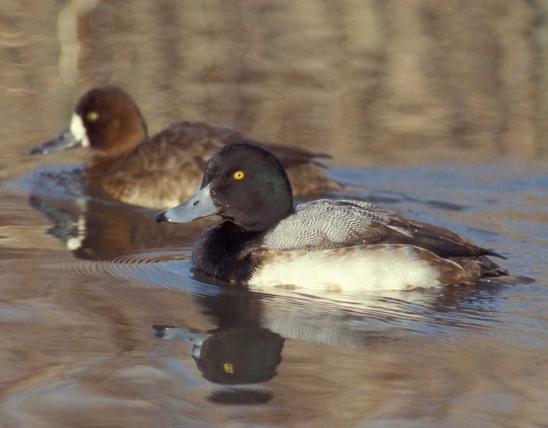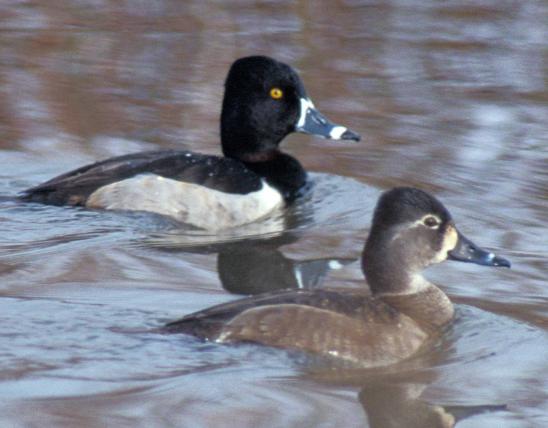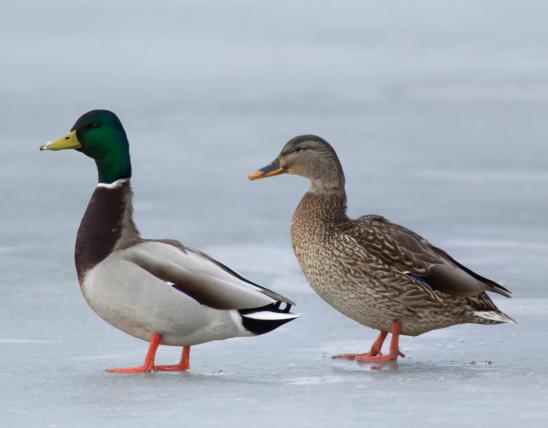
In lesser scaup, the adult male’s head is angular or peaked, not rounded as in the greater scaup, and it has a purple (not green) sheen. Note also the smaller bill with a small nail at the tip. The white wing stripe is restricted to the secondary wing feathers; the wing stripe on the primaries is gray. The female is brown, with white around the base of the bill giving it a white "face," similar to the greater scaup female. Scaups are mostly silent. The female makes a hoarse can-can-can or a barking garf, garf, garf that is higher and softer than the female greater scaup’s. The male has a high-pitched whistle.
Similar species: The closely related greater scaup is a rare migrant in Missouri. See the paragraph above for how to distinguish between the two. Ring-necked ducks have a point or bump on the back of the head; the male has a black back, and the female a white eye-ring.
Length: 17 inches (tip of bill to tip of tail).

Statewide.
Habitat and Conservation
Occurs in lakes, ponds, rivers, or reservoirs, in areas free from emergent aquatic vegetation and ice. Like other bay ducks (diving ducks, or pochards), scaups can dive completely underwater. Compared to dabbling ducks, their wings are smaller relative to their body weight. To take flight, they flap their wings and run along the surface of the water, patting their feet on the surface, gaining speed and lift until they are airborne.
Food
Like other diving ducks, scaups forage for aquatic invertebrates such as snails, crayfish, and aquatic insects, and submerged aquatic vegetation by diving completely below the surface and swimming underwater. The word scaup (pronounced “skopp”) may be related to the word scalp, akin to terms in northern European languages that mean “shell” or “shellfish bed”: In some regions, scaups feed on clams, oysters, and mussels.
Status
Common migrant. Occasionally observed statewide in summer although not known to breed within our border. Lesser scaup numbers are robust but have declined nearly 60 percent between 1966 and 2015, and no one is sure why. Numerous explanations have been proposed. Habitat loss and pollution may be part of the problem, but it could also be due to the lesser scaup’s relatively late breeding time: Climate change may be causing their foods to diminish at the place and time their growing young need top nutrition.
Life Cycle
Lesser scaup breed in inland Alaska, most of western Canada, and south into Montana and Wyoming. In fall, they and millions of other birds migrate south, mostly along the famous Central and Mississippi flyways, to winter in the southern United States and into Central America. In Missouri, we usually only see them in spring and fall as they migrate.
Human Connections
Like other popular migratory gamebirds, their numbers are carefully monitored by state, federal, and international conservation agencies. Overhunting in the past was one reason why game laws, wildlife reserves, and conservation departments were created.
Ecosystem Connections
Scaups and several other duck species have been shifting their migration routes somewhat, so that more are passing through Lake Erie, where the invasive zebra and quagga mussels have taken hold. Apparently, the large numbers of mussels offer a reliable, abundant food source for the ducks. But researchers worry that ducks feasting on these mussels may be harmed in the long run, because the filter-feeding mussels collect and concentrate pollutants in their tissues. A diet heavy with mussels contaminated with cadmium, selenium, polychlorinated biphenyls (PCBs), and other pollutants may be impairing the ducks' ability to reproduce.


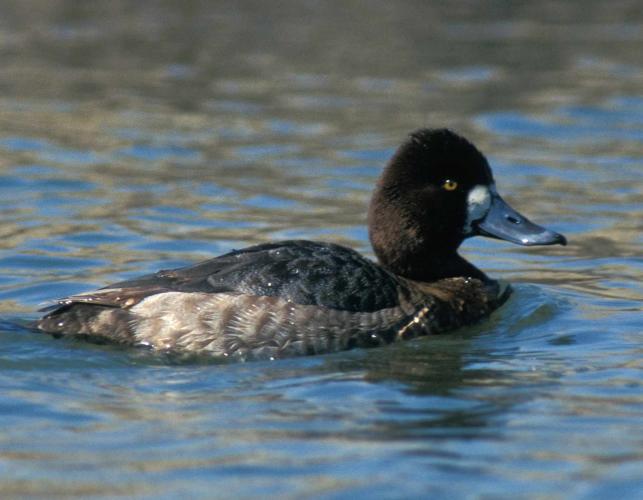
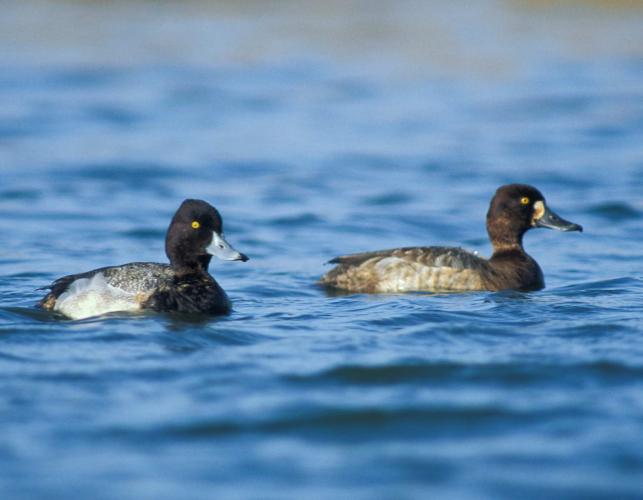

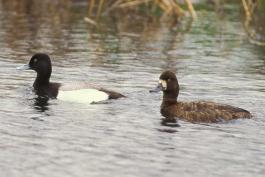
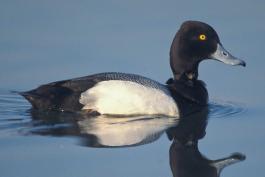



About 350 species of birds are likely to be seen in Missouri, though nearly 400 have been recorded within our borders. Most people know a bird when they see one — it has feathers, wings, and a bill. Birds are warm-blooded, and most species can fly. Many migrate hundreds or thousands of miles. Birds lay hard-shelled eggs (often in a nest), and the parents care for the young. Many communicate with songs and calls.

